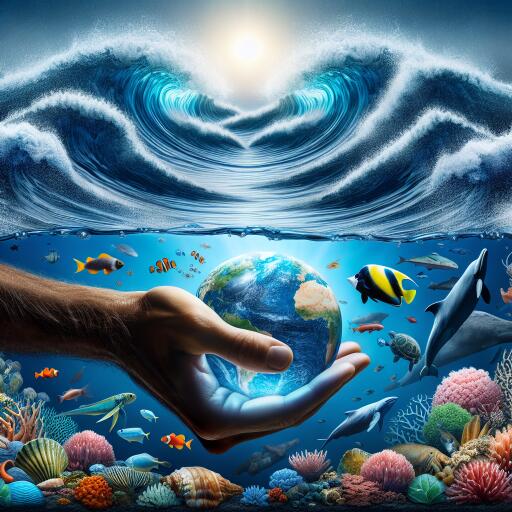
From ripples to waves: Protecting our marine biodiversity heritage through synergies
As we navigate through the vibrant Maritime and Archipelagic Nation Month (MANA Mo) in September, culminating with World Maritime Day on the 26th, our focus sharpens on the rich tapestry of marine biodiversity that the Philippines, an archipelago graced with 679,800 square kilometers of territorial sea, proudly holds. Enveloping this vast marine expanse is the Verde Island Passage Marine Corridor, globally recognized as a nucleus of marine shore fish biodiversity. This makes the Philippines the 11th top fish and fish product producer worldwide, highlighting the crucial role of marine resources in sustaining the country’s food security. The Filipino adage, “if rice is life, fish is lifeline,” echoes the indispensable part that these marine offerings play in enriching the dietary staples of the Filipino population.
Spanning 26,000 square kilometers, the Philippines’ coral reefs, the second largest collection in Southeast Asia, host over 500 coral species, with many endemic to the region. These vibrant underwater forests not only support a plethora of marine life but also serve as critical waypoints for migratory species ranging from whales and sharks to turtles and even waterbirds. These species depend on the ecologically interconnected habitats stretching from the icy currents of the Russian Far East and Alaska, through the biodiversity-rich corridors of East Asia and Southeast Asia, down to the temperate climes of Australia and New Zealand.
A recent forum titled “Coral Reefs & Currents: Prioritizing Marine Conservation in the West Philippine Sea” spearheaded discussions on innovative approaches to safeguarding these marine habitats. Among the notable insights were advancements in coral breeding techniques aimed at bolstering reef resilience against the twin threats of destructive fishing practices and coral bleaching. Government initiatives were also in the spotlight, showcasing efforts to amplify the coverage and effectiveness of Marine Protected Areas (MPAs), now encompassing 1.42% of the Philippine sea territory. Furthermore, collaborative projects, such as the coral reef restoration in Iba, Zambales, underscore the importance of multi-stakeholder engagements in driving conservation efforts forward.
Addressing the pressing challenges posed by the triple planetary crisis – biodiversity loss, climate change, and pollution – requires a united front. This unification is evident in the Philippines’ adherence to multilateral environmental agreements (MEAs), including pivotal conventions on biological diversity, climate change, and the protection of migratory species, among others. The intricate goals of these MEAs resonate deeply with the ecosystems they aim to protect, underscoring the interconnectedness of our environmental stewardship initiatives.
The Kunming-Montreal Global Biodiversity Framework emerges as a beacon of collective aspiration towards a harmonious coexistence with nature by 2050. This framework outlines four primary goals, reflective of the Convention on Biological Diversity’s core objectives, alongside 23 actionable targets to be achieved by 2030. Integral to realizing these ambitions is the acknowledgment of the need for equitable access to financial resources, capacity-building opportunities, and technological advancements, particularly for developing nations like the Philippines.
In line with these global objectives, the Philippines has introduced significant legislative measures, such as the Philippine Ecosystem and Natural Capital Accounting System (PENCAS) Act, to incorporate environmental assets and biodiversity into its economic framework. Additionally, the issuance of guidelines on blue bonds marks a significant stride towards mobilizing financial resources for the conservation and sustainable management of marine and coastal ecosystems.
Despite looming geopolitical tensions in the West Philippine Sea, opportunities for cooperation remain buoyant, showcasing a shared commitment to mitigating environmental degradation and biodiversity loss. This collective endeavor to uphold the integrity of our marine ecosystems underlines the profound connection between the Filipino people and their rich marine heritage – a legacy for all to cherish and protect.





Leave a Reply